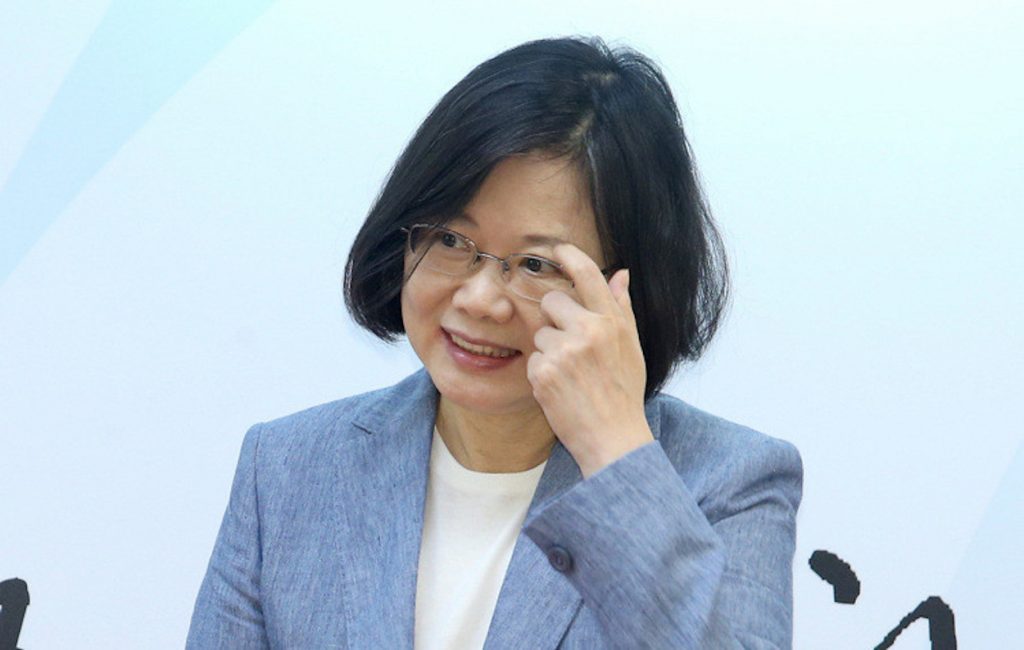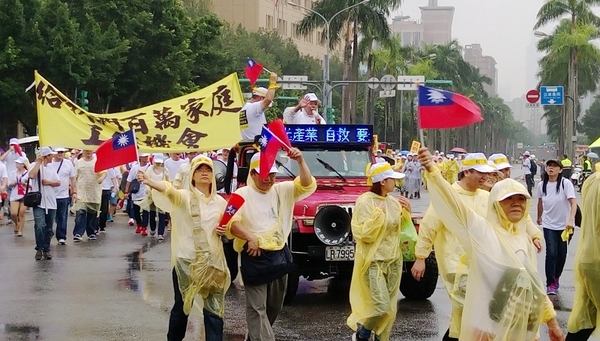by Brian Hioe
語言:
English
Photo Credit: CNA
RECENT REPORTS may indicate that Tsai administration officials hope to renew the push towards the New Southwards Policy by ensuring better coordination in the future among relevant officials, pointing to the current challenges of the New Southwards Policy. The New Southwards Policy was touted during past elections as part of the Tsai administration’s broader aim of further drawing Taiwan out of Chinese political influence by reducing Taiwan’s economic dependency on China.
But there are manifold challenges of diversifying Taiwanese trade’s dependence on China by building stronger economic and political ties with Southeast Asian countries. Criticisms of the New Southward Policy are that it has mostly been talk, with no action. Tsai’s New Southwards Policy is in many ways a replay of Lee Teng-Hui’s earlier attempt at a Southwards Policy, which seems appropriate given that Tsai began her career in Taiwanese politics as one of Lee’s proteges.
To date, ways of boosting economic relations between Taiwan and Southeast Asian countries have included easing visa requirements for citizens of Thailand, Brunei, the Phillippines, Myanmar, Cambodia and Laos. Taiwan has also attempted to increase the number of international students from Southeast Asian countries studying in Taiwan and to encourage more Taiwanese students to study in Southeast Asia. But apart from trying to facilitate easier travel and study between Taiwan and Southeast Asian countries, the Tsai administration has not offered a comprehensive program for what other policy actions will be taken as part of the New Southwards Policy and what the timeline for enacting policy will be.
 Tsai Ing-Wen. Photo credit: UDN
Tsai Ing-Wen. Photo credit: UDN
This sometimes leads to the perception that the New Southwards Policy has merely been for the sake of appearances. After all, when comparing the policy platform of the Tsai campaign and Chu campaigns during 2016 elections, many FTA-related aspects were largely the same, involving signing FTAs with America, China, and the European Union including both the America-led TPP and the China-led RCEP. Nevertheless, the Tsai campaign emphasized the New Southwards Policy and the aim of reducing dependence on China as a way of differentiating its economic policy from that of the KMT. If the New Southwards Policy has run aground, then this lends weight to the accusation that the Tsai administration hasn’t carried out substantially different economic policy from the KMT. Specifically, Tsai’s administration has been accused of failing to distinguish itself from the KMT regarding cross-straits trade agreements, diplomatic appointments, and labor policy.
Will Tsai’s New Southwards Policy suffer the same fate as Lee’s previous attempt, then? Notably, Lee’s earlier Southwards Policy was unsuccessful, due to a lack of administrative commitment in pushing through the policy. For example, with regard to Taiwanese businesses, it is always easier doing business with China because of the lack of a language barrier and softer cultural barrier. On the other hand, doing business with Southeast Asian countries sometimes require learning languages that may take many years to master, and requires overcoming a higher cultural barrier.
Indeed, the Chinese tourist industry’s demonstrations against the Tsai administration have, more or less, been that of a vested interest group attempting to influence policy that affects Taiwan as a whole for the sake of the interest group’s own benefit. But Chinese tourist companies have been correct to point out that if Tsai hopes to increase tourism from Southeast Asian countries to Taiwan, the current infrastructure for handling tourists from Southeast Asian countries is inadequate because of the lack of tour guides in Taiwan who can speak Southeast Asian languages. This is reflective of the broader dilemma faced by Taiwanese companies in doing businesses with Southeast Asian countries.
 Protest by tour industry groups against the Tsai administration in September. Photo credit: UDN
Protest by tour industry groups against the Tsai administration in September. Photo credit: UDN
The Tsai administration also has been lackluster in handling diplomatic crises that stand to affect relations between Taiwan and Southeast Asian countries. For example, the Tsai administration has offered little response to the mass fish deaths in Vietnam caused by the Taiwanese-owned Formosa Steel, which have provoked the largest social movement Vietnam has likely seen in decades. Another case in point would be the Tsai administration’s lack of response to outrage in Indonesia caused by the rape of an Indonesian caregiver working in Taiwan by her Taiwanese employer. In some cases, simply making a public statement might go a long way in easing political tensions between Taiwan and Southeast Asian countries.
Easing tensions is in the interest of preventing international incidents from disrupting attempts to build stronger ties between Taiwan and Southeast Asian countries, especially when the guilty parties are Taiwanese. But the Tsai administration has failed to do this. It is similarly to be questioned why the Tsai administration would risk alienating potential allies against China by clashing with them on the issue of contested South China Seas islands.
The difficulties of the New Southwards Policy may perhaps return to the contradictions of contemporary Taiwan. Taiwan is an increasingly diverse society. One in ten Taiwanese children today have a foreign born parent, usually a mother. Yet despite these changing demographic trends reflecting of the growing number of foreign workers in Taiwan, Taiwan does not yet have the infrastructure to conduct outreach and build ties with Southeast Asian countries.
Sometimes this ultimately returns to a disregard for the rights of Southeast Asian immigrants within Taiwanese society. Cases of sexual violence against migrant worker caregivers are not unusual, and the legal protections for migrant parents are sorely lacking, with it not being uncommon for parents to be denied visiting or custody rights for their children. This is regardless of the claims of the Tsai administration that Taiwan is an open, pluralistic society, or the Tsai administration touting the increasing number of foreign parents of Taiwanese children in order to juxtapose Taiwan’s demographic diversity with that of China.
And Taiwan’s lack of a response to international incidents with Southeast Asian countries is sometimes reflective of Taiwan’s economic relationship with Southeast Asian countries as an economic exploiter. The actions of Taiwanese companies’ actions abroad, such as in Formosa Steel’s handling of mass fish die-offs in Vietnam, may lead Taiwan to be seen as an economic exploiter of Southeast Asian countries. If so, Taiwan will be seen as no different from China. And this will not do for attempts to build stronger political ties, precisely with the aim of cementing regional alliances against China. Thus, the challenges of the New Southwards Policy remain to be overcome by the Tsai administration.

